Women, I’m told, sometimes feel that strength training means that they have to eat testosterone for breakfast and get ripped. Nah, you just have to move more. This was published in the Register-Guard special section called Dash in August 2013.
Strength and Fitness for Women
Get stronger, leaner and healthier by adding weights to what you’re already doing
By Vanessa Salvia
It’s a sad fact that muscle mass diminishes with age, but strength training can help to reverse this process, no matter how old you are when you start.
Many women that exercise spend more time on cardiovascular exercise and less time using resistance or weights. Perhaps this is due to a perception that women will “bulk up” like bodybuilders if they lift weights, or perhaps it’s a reluctance to join the “jocks” in the weight room in the gym.
Luckily, neither of these scenarios hold truth. Resistance training does not have to mean hitting the weight room or using intimidating machines. Strength training can be done at home or in a gym, and many resistance exercises can be done with no equipment at all.
Debbie Rosenthal is a certified personal trainer and group fitness director at Eugene’s In Shape Athletic Club. She says that for men or women, strength training builds muscle and decreases the risk of osteoporosis, diabetes, heart disease and depression. It increases metabolism and joint stability, which decreases risk of injury. And perhaps best of all, “Strength increases can happen with resistance training as little as twice per week,” Debbie says. “Twelve to 15 repetitions of two sets of each exercise. It can be minimal and there are strength gains to be had.”
Debbie assures that women won’t bulk up. “They’re going to tone and strengthen but not bulk up,” she says, “because they don’t have the testosterone that men do.” This stance is affirmed by Hans Dreyer, assistant professor in the University of Oregon Muscle Physiology lab, who says that circulating testosterone levels are several times greater in men than women. “Resistance training will affect men and women similarly in that they both will realize an increase in strength and eventually increases in muscle mass,” Hans explains. “However, the data suggest that women do not increase muscle mass to the same extent.” Women do burn fat to a greater extent than men, though. Hans says, “Cells in men tend to oxidize carbohydrates and proteins while women oxidize more fat.”
One of Hans’s research goals is to understand how amino acid supplementations affects muscle growth during rehabilitation. His research suggests that if the goal is to increase muscle mass, essential amino acids have a role to play. “Ingesting 10 grams or more of essential amino acids within 1 hour of exercise will be of maximal benefit,” Hans says. “Essential acids are those amino acids, or building blocks for proteins in mammals, that we cannot synthesize in our cells and thus must be ingested.”
Women can increase muscle strength through push-ups, either on the knees or angled against a table, says Debbie. “You can create a lot of good upper body strength that way,” she says. “For lower body strength, do a body-weight squat or alternating lunges.” Core strength can be achieved through a fore-arm plank. Debbie suggests googling the names of these exercises for videos or other visuals if they are unfamiliar.
If you do wish to invest in some minimal equipment, Debbie suggests a pair of hand weights for bicep curls, tricep dips and rows. Perform two sets of 12 to 15 reps only. “There should be a sense of fatigue after the 15th rep,” she says.
Personal trainers offer some benefits to women embarking on a strength training routine for the first time. “A personal trainer can assess form, or help you recover from an injury,” she says. “Personal trainers can design a very safe and effective program that takes into account that individual’s anatomy and physiology.” And there’s that “extra motivation” part of the equation. “People push themselves harder and adhere to a program more with a trainer because they’re accountable,” Debbie notes.
If you’re already happy cycling, walking your dog on a regular basis, hiking, gardening or enjoying other cardio activity, adding weights can add strength-training benefits to what you are already doing. Debbie cautions, though, that not all methods of adding weight are created equal.
“Ankle weights are not approved by me!” she laughs. “They pull down on the knee joint.” Holding a weight in each hand while walking is also not good, because it pulls on the arm joints in the same manner. Debbie suggests a weighted vest, which distributes weight evenly across the spine, or a good-fitting backpack that can be weighted and worn while doing almost any activity.
“I strongly encourage anyone to do some minimal resistance training,” says Debbie, who has been a certified personal trainer since 1996. Lunges or squats while you’re brushing your teeth? “That counts!” she says. “It can all be incorporated within that person’s regular activities.”
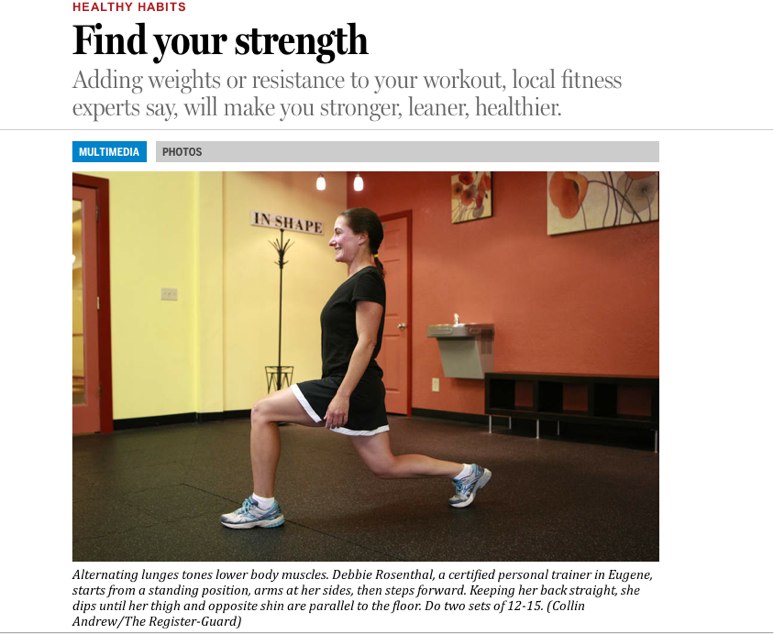
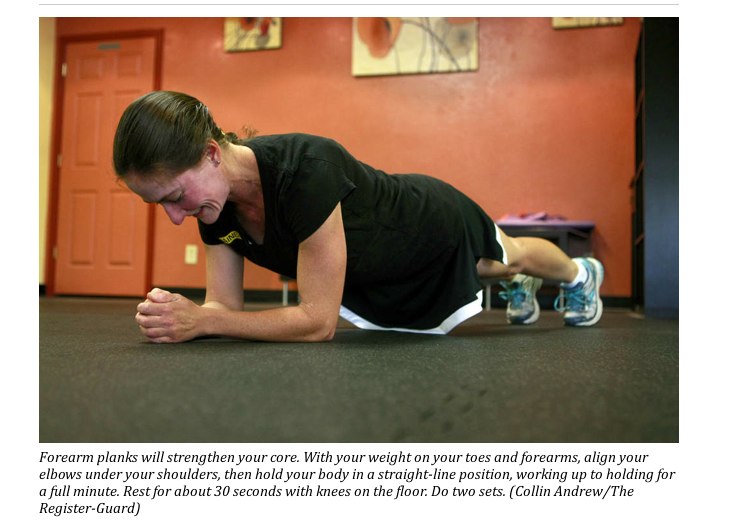
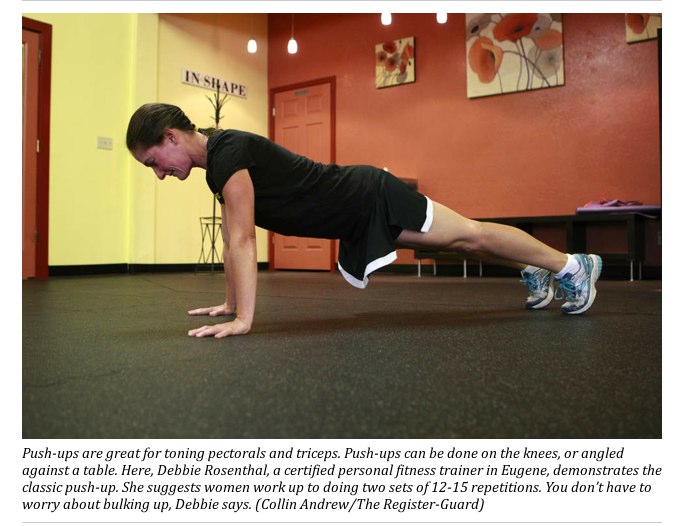
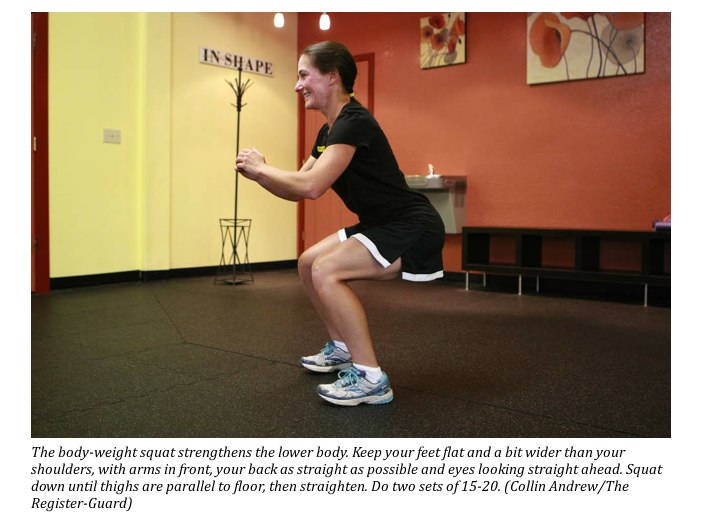
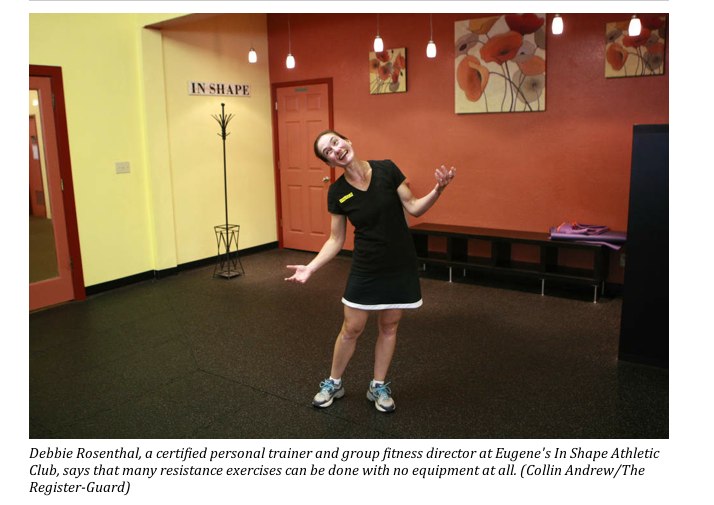
No comments yet.